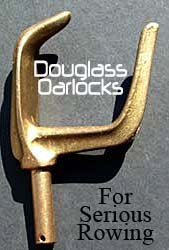I used “Painting Lettering” (by Rob Rohde-Szudy, in Duckworks’ How-to index) as a starting point to make stencils for painting Arr & Arr’s registration number and name onto her sides, but instead of making stencils out of nonadhesive stock and applying glue to the stencils’ backs as Rob did, I used SureSwatch paintable, self-adhesive clear film.

Materials for making stencils |
SureSwatch is designed for temporary paint swatches that you stick on your home’s walls to help you decide what color you want to paint a room. You paint the front of the swatch sheet with the desired color, let the paint dry, peel off the sheet’s backing, and stick the swatch right on your wall. When you’re finished with the swatch, you peel it off of the wall and dispose of it. No swatch paint left on the wall, no wall paint peeled off. The tackiness of the adhesive backing is about that of painter’s tape. I bought the SureSwatches at the hardware store for about $3.00 per three-pack. I used eight or nine sheets total.
I also veered from Rob’s lead by leaving the letters’ and numbers’ islands (the middle parts of the letter A, the number 6, and such) attached to the main parts of the stencils with bridges (connectors to those middle parts).

Cutting a stencil |
I taped a swatch sheet onto a cutting mat, taped a full-size printout of my text over the swatch, drew my bridges onto those, and cut out my stencils with an X-Acto knife, removing the cut-out pieces of printed paper and self-adhesive film as I went. I applied enough pressure to go through the printed paper and the self-adhesive film but not all the way through the film’s backing. I figured it would be easier to remove the finished stencil from its backing that way. When taping each printout over a swatch sheet, I aligned the top edge of the printout with the top edge of the swatch sheet so that when I applied the stencils to the boat, I could line up my text simply by aligning the stencils’ top edges. Before sticking the stencils onto the hull, I ran a strip of painter’s tape horizontally across the hull so that the lettering would be where I wanted it after applying the stencils butted up against that tape.

Stencils and paint applied |
I applied two coats of black topside paint with an artist’s brush about 1/2ʺ wide, applying the coats at right angles to each other. I applied the second coat within ten or fifteen minutes of the first, being careful to move quickly but gently and to not brush the same spot more than once or twice on the second coat. Otherwise, I would have risked mixing the second coat into the first and ending up without sufficiently opaque coverage. I wanted to finish both coats, pull off the stencils, touch up the gaps left by the stencil bridges, and clean up any blotches that might have seeped beneath the stencil edges before everything dried. I figured still-damp paint would be easier to touch up and would allow the touch-ups to self-level with the rest of the paint.
I used a tiny artist’s brush for filling in the gaps left by the bridges. For cleaning up the blotches, after a little trial and error, the best method I found was keeping a second tiny artist’s brush handy in a small cup of thinner. I’d dab the thinner-soaked brush on a shop towel to remove excess thinner and then erase a blotch from its outer edge toward the letter or number with a reverse rolling action that kept fresh bristles picking up the excess paint from the hull instead of just pushing the paint around. I’d follow that with the other tiny brush, the one I was using with the paint, to make the edge as clean as I was able. Then I’d move on to the next bridge or blotch.
I originally thought that using a font face that had ragged edges by design would enable me to skip all but the worst blotches, but regardless of size, the majority of the blotches didn’t match the style of the designed raggedness, so they still had to go.
I painted the registration numbers on one side, pulled off the stencils, and cleaned up those numbers before moving on to painting the numbers on the other side. Likewise, I finished those before moving to the name on one side, and I finished that before moving on to the name on the other side. That ensured that the paint was still wet enough to easily touch up when I got to that step for each bit of painting.

After removing stencils, fitting in bridge gaps, and cleaning up edges |
It wasn’t perfect. I wish I had used more bridges. My stencils with all those stray bits of letters and numbers dangling about were difficult to work with, which led to not getting the stencils pressed down evenly, which I think was the primary contributor to the paint seeping under the edges here and there.
The job took a total of about six hours’ work. I spent two or three of those hours one evening cutting out stencils, and I spent the remaining three or four hours prepping, painting, and cleaning up. That was longer than I thought it would take, but I was pleased with the results.
|










